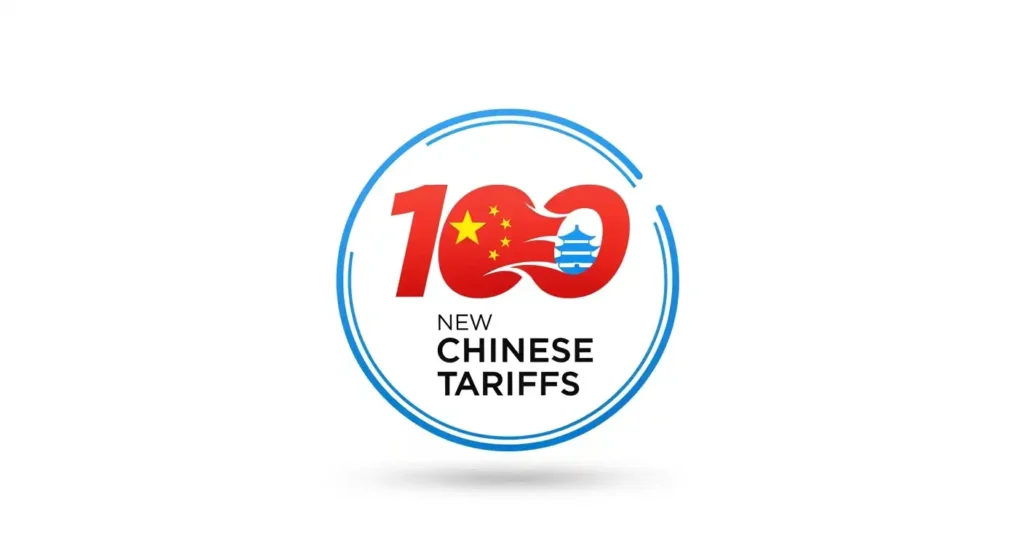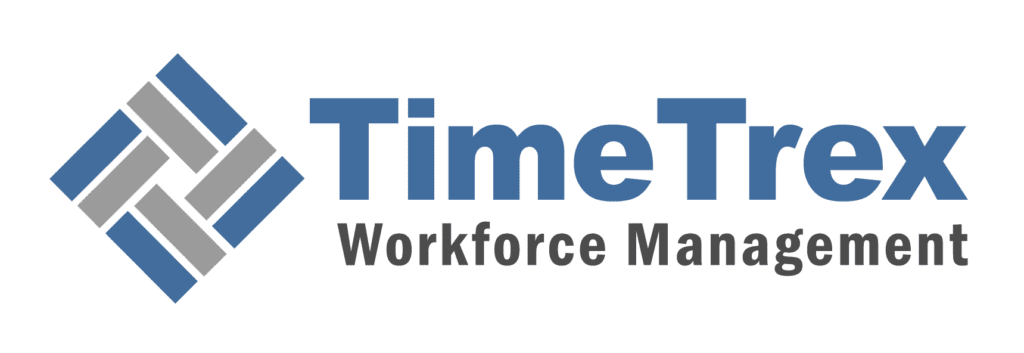
New 100% Chinese Tariffs
In October 2025, the global economy was shaken by the announcement of a new 100% tariff on all Chinese goods entering the United States. This monumental step, declared on top of existing duties, signals a dangerous new chapter in the U.S.-China economic conflict, moving beyond a simple trade war into a strategic battle for control over critical supply chains and technologies. This article provides a comprehensive analysis of the 100% Chinese tariff, its catalysts, China's multifaceted response, and the profound economic shockwaves impacting businesses and consumers worldwide. Understanding the nuances of this escalating trade dispute, from export controls on rare earth elements to retaliatory port fees, is crucial for any business navigating the complexities of international trade and supply chain management in this volatile environment.
TL;DR
In October 2025, the U.S. announced its intent to impose a 100% tariff on all Chinese goods, in addition to existing tariffs, and new export controls on critical software. This was a direct response to China expanding its own export controls on strategic materials like rare earth elements (REEs). The move triggered a massive, albeit temporary, global market sell-off. China retaliated not with matching tariffs, but with an asymmetric strategy of port fees, corporate sanctions, and antitrust probes. The conflict has now evolved from a "trade war" about commercial imbalances to an "economic security war" focused on controlling the foundational technologies and materials of the 21st century. This shift creates unprecedented risks and uncertainty for global supply chains, corporations, and investors.
Article Index
Anatomy of the New U.S. Trade Measures
The U.S. administration's policy announcement in October 2025 represented one of the most significant trade actions in modern economic history. Its structure, timing, and legal underpinnings reveal a strategy designed to exert maximum economic pressure while maintaining a degree of tactical flexibility.
Deconstructing the 100% Tariff Announcement
On Friday, October 10, 2025, U.S. President Donald Trump declared that the United States would impose a 100% tariff on all goods imported from China. Critically, the tariff was defined as being "over and above any tariff that they are currently paying." With existing tariffs averaging around 30%, this measure would elevate the effective total tariff rate on Chinese imports to approximately 130%, a level designed to cripple commerce rather than simply recalibrate it. The implementation timeline was set for November 1, 2025, but with a crucial condition: "or sooner, depending on any further actions or changes taken by China," turning the tariff into a dynamic instrument of coercion.
Beyond Tariffs: The Strategic Implications of U.S. Export Controls on Critical Software
Announced concurrently with the tariff was the imposition of "Export Controls on any and all critical software." This action represents a major non-tariff escalation, moving the conflict into the domain of technology denial. While tariffs target the flow of goods into the U.S., these software controls aim to restrict the flow of American innovation to China, directly targeting its technological development ambitions.
Legal Foundations and Precedents
The administration has primarily invoked the International Emergency Economic Powers Act (IEEPA), framing trade issues as threats to national security. This use of IEEPA has faced legal challenges, with its fate pending a Supreme Court hearing. In parallel, the U.S. Trade Representative (USTR) has continued to use Section 301 of the Trade Act of 1974 to target specific Chinese sectors like maritime and logistics with new fees and tariffs.
| Date | Action |
|---|---|
| October 9, 2025 | China announces expanded export controls on rare earths, lithium-ion batteries, and graphite. |
| October 10, 2025 | President Trump announces a 100% additional tariff on all Chinese goods and new software export controls, effective November 1 or sooner. |
| October 10-13, 2025 | Global financial markets experience a sharp sell-off, with major U.S. indices posting significant losses. |
| October 12-14, 2025 | China vows "resolute measures" and implements retaliatory port fees on U.S. vessels. |
The Catalyst: China's Gambit on Strategic Minerals
The U.S. measures were an explicit response to China's move to tighten its grip on strategic minerals. On October 9, 2025, Beijing expanded export controls on materials vital to global high-tech and defense industries, shifting the battleground from tariffs to supply chain control.
Weaponizing Dominance: A Deep Dive into China's Expanded Export Controls on Rare Earths
China, which dominates over 90% of rare earth element (REE) processing, expanded its restricted list and mandated that any company worldwide must get Beijing's approval to export products containing more than 0.1% REE content by value. This audacious extraterritorial reach, coupled with a direct military exclusion clause, is a clear targeting of the U.S. defense industrial base.
Beyond REEs: New Restrictions on Lithium-ion Batteries, Graphite, and Production Technologies
Simultaneously, Beijing announced restrictions on lithium-ion batteries and synthetic graphite—both essential for electric vehicles (EVs). Crucially, the controls also covered the production technologies themselves, an effort to slow other nations' attempts to build independent processing capabilities and preserve China's strategic advantage.
Beijing's Stated Rationale: Assessing the "National Security" Justification
China justified its actions as necessary to "safeguard national security." However, analysts view the move as a calculated response to prior U.S. pressure, including enhanced controls on semiconductor equipment exports to China. It was a strategic maneuver to expose a critical Western vulnerability and change the terms of the entire conflict.
Beijing's Response: A Strategy of "Resolute" Reciprocity
China's reaction to the 100% tariff threat was immediate and strategically asymmetric. Beijing avoided a direct tariff-for-tariff escalation, instead deploying countermeasures designed to create targeted friction for U.S. corporate interests.
The Official Stance: Rhetoric and Reality from the Ministry of Commerce
Beijing's public response was defiant, stating, "We do not want [a trade war], but we are not afraid of it." Officials condemned the U.S. action as hypocritical and vowed to "fight to the end."
Tit-for-Tat Measures: An Analysis of China's Counter-Tariffs, Port Fees, and Corporate Sanctions
China's retaliation focused on non-tariff barriers. It imposed "special port fees" on U.S. vessels, launched an antitrust probe into U.S. tech giant Qualcomm, and imposed sanctions on U.S.-linked subsidiaries of a South Korean shipbuilder. These actions were designed to create a hostile and unpredictable business environment for specific U.S. corporations.
| Measure Type | United States | People's Republic of China |
|---|---|---|
| Primary Tool | 100% Additional Tariff (Broad-based) | Expanded Export Controls (Strategic Supply Chain) |
| Target | Entire Chinese export economy | U.S. Defense, Tech, and Green Energy sectors |
| Secondary Tool | Export controls on critical software (Tech Denial) | Special Port Fees on U.S. vessels (Logistical) |
| Tertiary Tools | N/A | Antitrust Investigations, Corporate Sanctions (Regulatory/Legal) |
Diplomatic Maneuvering and the Fate of the Trump-Xi Summit
The tariff announcement jeopardized a planned meeting between President Trump and Chinese President Xi Jinping. After initially signaling the meeting was off, the U.S. administration softened its tone following negative market reactions. This vacillation revealed a core tension between projecting strength and maintaining a path to negotiation.
Economic Shockwave: Impact Analysis
The announcement of a potential 130% effective tariff rate sent immediate and powerful shockwaves through the global financial system and prompted dire forecasts from leading economic institutions.
Global Market Convulsions: Tracking the Immediate Sell-Off and Subsequent Volatility
The market reaction on October 10 was severe, with the Nasdaq plunging 3.6% and over $1.5 trillion wiped from U.S. stock market capitalization. A flight to safety saw gold surge to record highs. However, markets quickly rebounded on more conciliatory rhetoric, giving rise to the "Taco trade" theory (Trump Always Chickens Out), where traders bet that aggressive threats are mere negotiating ploys.
Macroeconomic Consequences for the United States
Economists agree tariffs act as a tax on domestic consumers. A Yale analysis estimated the new tariffs could cause a 1.7% increase in the U.S. price level, equating to an average real income loss of $2,400 per household. Prices for consumer goods, apparel, and motor vehicles are projected to see dramatic short-run increases.
Assessing the Damage to China's Economy
While harmful, China's economy is more resilient than in 2018. It has diversified its trade away from the U.S. and is expected to respond with robust domestic fiscal stimulus to cushion the blow and support affected industries.
Global Contagion: Forecasts from the IMF and World Bank
The IMF and World Bank have warned that a full-blown trade war poses a grave threat to the global economy. The IMF's modeling suggests a widespread tariff hike could reduce global GDP by 1.2 to 1.8 percentage points when secondary effects are included, warning that financial markets appear "complacent" about the systemic risks.
| Source | Key Forecast / Analysis |
|---|---|
| International Monetary Fund (IMF) | A renewed trade war could reduce global GDP by an additional 1.2-1.8 percentage points. |
| World Bank | Global growth projected to weaken, with risks tilted to the downside due to trade barriers. |
| Yale Budget Lab | Projected to raise U.S. price level by 1.7%, a $2,400 real income loss per household. |
| Global Trade Research Institute (GTRI) | Global prices for EVs, wind turbines, and semiconductor parts are expected to rise. |
The Evolving Geopolitical Landscape
The October 2025 crisis marks a pivotal evolution in the U.S.-China economic relationship. The conflict has matured from a bilateral "trade war" into a global "economic security war," focused on the control of strategic assets.
The 2025 Escalation vs. the 2018 Trade War: A Comparative Analysis
Compared to 2018, the 2025 escalation is different in three key ways. First, the rationale has shifted from trade imbalances to explicit national security concerns. Second, the scale is comprehensive and punitive, designed to halt trade, not just influence it. Third, China is more prepared, having diversified its markets and developed a more sophisticated, asymmetric toolkit of countermeasures.
Opportunities and Perils for Third-Party Nations: The Case of India
The escalating conflict is forcing a global realignment of supply chains. The U.S. is actively pursuing a "friend-shoring" strategy, creating opportunities for nations like India, Vietnam, and Mexico. However, this is fraught with peril. A New Delhi-based think tank cautioned that "no deal with the US is ever final," and an over-reliance on shifting U.S. promises could be risky.
The Future of U.S.-China Relations: Scenarios from De-escalation to Full Decoupling
The trajectory from here is uncertain. Scenarios range from a negotiated de-escalation (seen as most likely by many analysts) to the full implementation of tariffs, triggering a chaotic economic decoupling. A third possibility is a protracted stalemate and a new "Cold War," where the tariff threat hangs over the global economy, leading to a balkanization of trade into competing blocs.
Strategic Recommendations for Stakeholders
The paradigm shift in U.S.-China relations necessitates a fundamental reassessment of strategy for corporations, investors, and policymakers.
For Corporations: Navigating Supply Chain Volatility and Mitigating Tariff Exposure
The era of optimizing supply chains for cost is over; resilience is now paramount. Businesses must conduct comprehensive supply chain audits to identify hidden dependencies on China, shift from "just-in-time" to "just-in-case" inventory models by building strategic reserves, and pursue long-term supplier diversification and regionalization to insulate operations from bilateral tariffs.
For Investors: Identifying Risks and Opportunities in a Fractured Global Trade Environment
Geopolitical risk is now a primary driver of capital allocation. Investors should stress-test portfolios for exposure to U.S.-China trade and identify "second-order" opportunities. These include companies in "friend-shored" countries (e.g., India, Mexico), producers of critical minerals outside of China, and enablers of supply chain transitions, like logistics and automation firms.
For Policymakers: Balancing National Security Imperatives with Economic Stability
The U.S. must develop a clear, coherent, long-term strategy that pairs any punitive measures with robust domestic industrial policy to rebuild capacity in critical sectors. China should recognize that weaponizing its supply chain dominance will only accelerate global efforts to design it out. Allied nations must work multilaterally to reform trade institutions and build resilient, secure supply chains for critical goods.
Calculate the Impact of New Tariffs on Your Business
The new 100% tariffs on Chinese goods can have a significant impact on your import costs and overall profitability. Use our free, up-to-date U.S. Tariff Calculator to understand how these changes will affect your bottom line and plan your strategy accordingly.
Use the Tariff Calculator NowDisclaimer: The content provided on this webpage is for informational purposes only and is not intended to be a substitute for professional advice. While we strive to ensure the accuracy and timeliness of the information presented here, the details may change over time or vary in different jurisdictions. Therefore, we do not guarantee the completeness, reliability, or absolute accuracy of this information. The information on this page should not be used as a basis for making legal, financial, or any other key decisions. We strongly advise consulting with a qualified professional or expert in the relevant field for specific advice, guidance, or services. By using this webpage, you acknowledge that the information is offered “as is” and that we are not liable for any errors, omissions, or inaccuracies in the content, nor for any actions taken based on the information provided. We shall not be held liable for any direct, indirect, incidental, consequential, or punitive damages arising out of your access to, use of, or reliance on any content on this page.
About The Author

Roger Wood
With a Baccalaureate of Science and advanced studies in business, Roger has successfully managed businesses across five continents. His extensive global experience and strategic insights contribute significantly to the success of TimeTrex. His expertise and dedication ensure we deliver top-notch solutions to our clients around the world.
Time To Clock-In
Start your 30-day free trial!
Experience the Ultimate Workforce Solution and Revolutionize Your Business Today
- Eliminate Errors
- Simple & Easy To Use
- Real-time Reporting

Saving businesses time and money through better workforce management since 2003.
Copyright © 2025 TimeTrex. All Rights Reserved.
